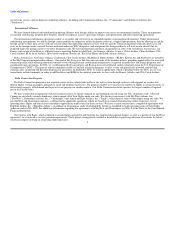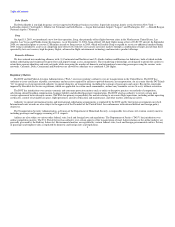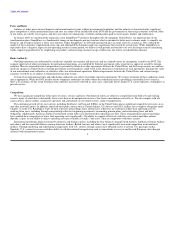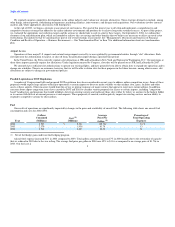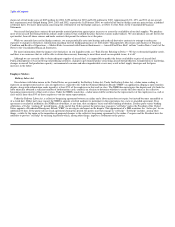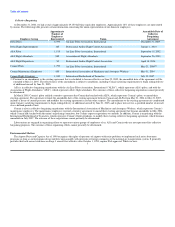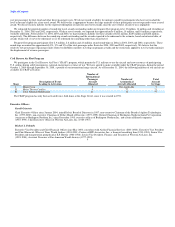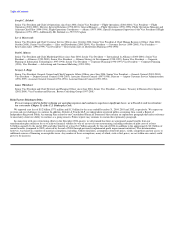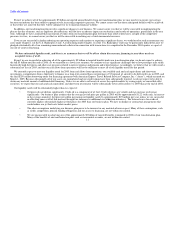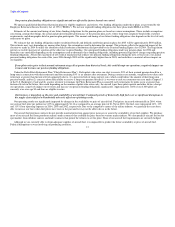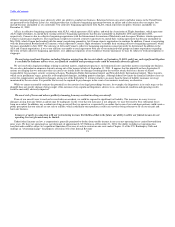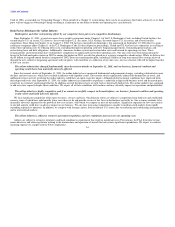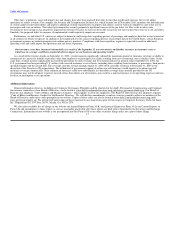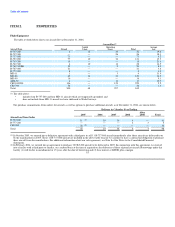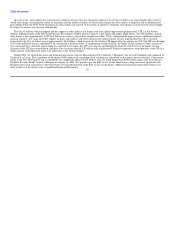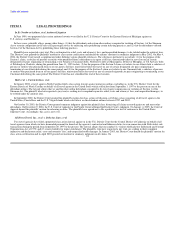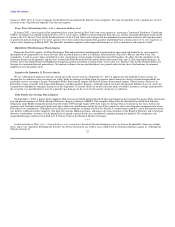Delta Airlines 2004 Annual Report Download - page 16
Download and view the complete annual report
Please find page 16 of the 2004 Delta Airlines annual report below. You can navigate through the pages in the report by either clicking on the pages listed below, or by using the keyword search tool below to find specific information within the annual report.
Table of Contents
• Our Visa/MasterCard processor requires a significant holdback. Our current Visa/MasterCard processing contract expires in August 2005. If
our renewal or replacement contract requires a significant holdback, it will increase our liquidity needs.
If the assumptions underlying our business plan prove to be incorrect in any material adverse respect and we are unable to sell assets or access the capital
markets, or if our level of cash and cash equivalents and short-term investments otherwise declines to an unacceptably low level, then we would need to seek
to restructure under Chapter 11 of the U.S. Bankruptcy Code.
Our financing agreements with GE Commercial Finance and Amex include financial covenants that impose substantial restrictions on our financial
and business operations and include financial tests that we must meet in order to continue to borrow under such facilities.
The terms of our financing agreements with GE Commercial Finance and Amex restrict our ability to, among other things, incur additional indebtedness,
pay dividends or make other payments on investments, consummate asset sales or similar transactions, create liens, merge or consolidate with any other
person, or sell, assign, transfer, lease, convey or otherwise dispose of all or substantially all of our assets. The terms also contain covenants that require us to
meet financial tests in order to continue to borrow under the facility and to avoid a default that might lead to an early termination of the facility. If we were not
able to comply with these covenants, our outstanding obligations under these facilities could be accelerated and become due and payable immediately. The
terms of the credit facilities, including these covenants, are generally described in "Management's Discussion and Analysis of Financial Condition and Results
of Operations — Financial Condition and Liquidity — Covenants" in Item 7.
Our indebtedness and other obligations are substantial and materially adversely affect our business and our ability to incur additional debt to fund
future needs.
We have now and will continue to have a significant amount of indebtedness and other obligations, as well as substantial pension funding obligations. As
of December 31, 2004, we had approximately $13.9 billion of total consolidated indebtedness, including capital leases. We also have minimum rental
commitments with a present value of approximately $6.4 billion under noncancelable operating leases with initial terms in excess of one year. On
December 1, 2004, we received an aggregate of $830 million in financing pursuant to separate financing agreements with GE Commercial Finance and Amex.
Except for commitments to finance our purchases of regional jet aircraft and the additional $250 million prepayment that we received from Amex on March 1,
2005, we have no available lines of credit. Additionally, we believe that our access to additional financing on acceptable terms is limited, at least in the near
term. If we cannot achieve a competitive cost structure and regain sustained profitability, we would need to seek to restructure our costs under Chapter 11 of
the U.S. Bankruptcy Code. A restructuring under Chapter 11 of the U.S. Bankruptcy Code may be particularly difficult because we pledged substantially all
of our unencumbered collateral in connection with our out-of-court restructuring in the December 2004 quarter.
Our substantial indebtedness and other obligations have, and in the future could continue to, negatively impact our operations by:
• requiring us to dedicate a substantial portion of our cash flow from operations to the payment of principal of, and interest on, our
indebtedness, thereby reducing the funds available to us for other purposes;
• making us more vulnerable to economic downturns, adverse industry conditions or catastrophic external events, limiting our ability to
withstand competitive pressures and reducing our flexibility in planning for, or responding to, changing business and economic
conditions; and
• placing us at a competitive disadvantage to our competitors that have relatively less debt than we have.
12


